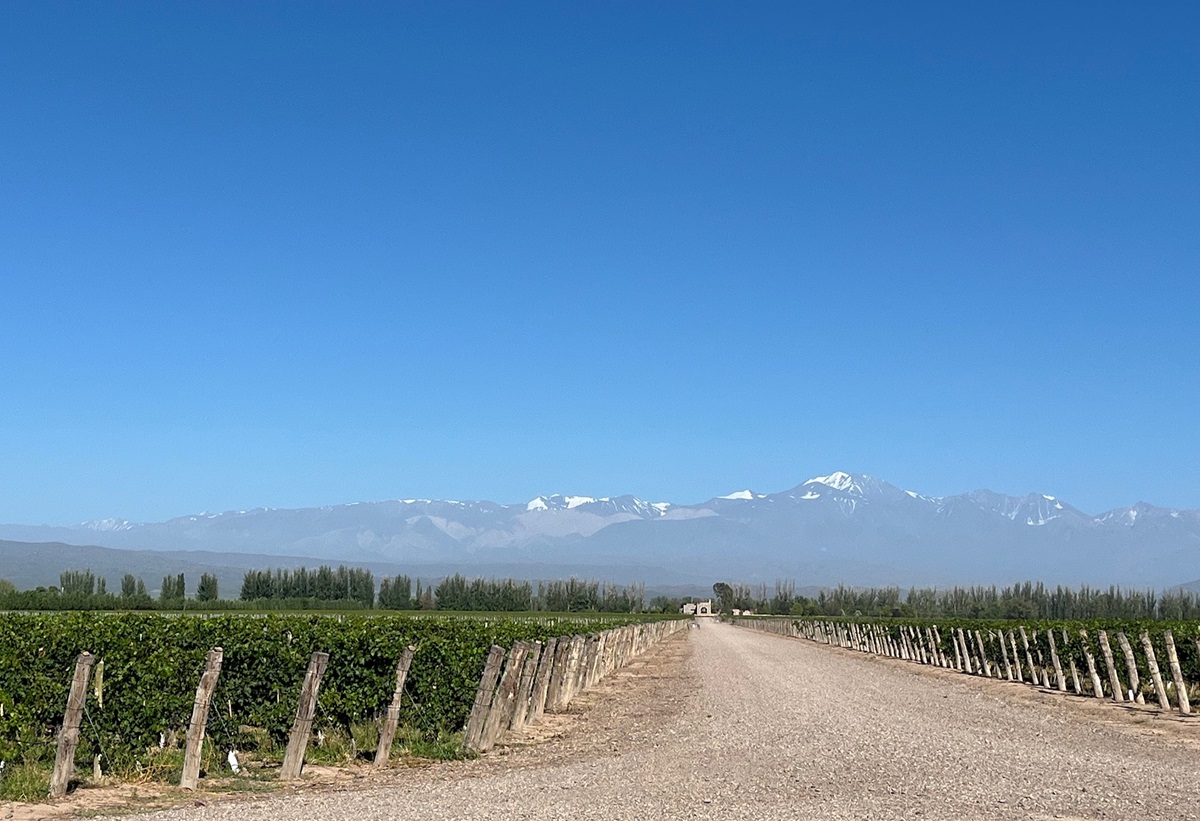HITTING THE SWEET SPOT
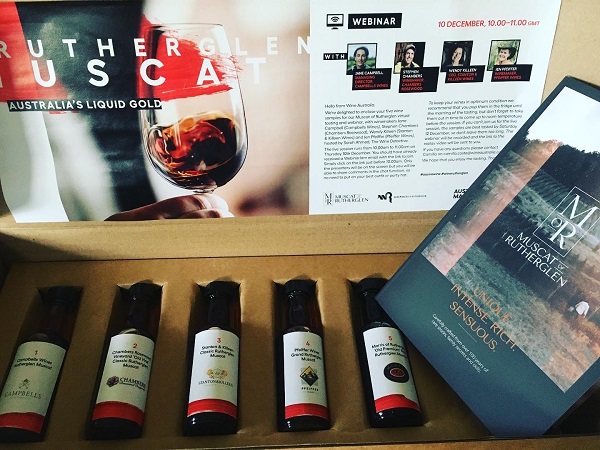
By Rose Murray Brown MW Published in The Scotsman 9 January 2021
The heady scents of Christmas pudding might seem an unlikely component to look for in winemaking, but that is what winemakers in Rutherglen watch for in the fermenting vat.
“As soon as our Muscat starts to smell like plum pudding, we know fermentation has started”, says winemaker Stephen Chambers of Chambers Rosewood Vineyards, the region’s most historic winery founded 1858.
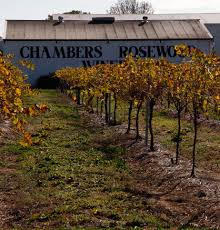 Rutherglen Muscat is one of the most historic and unique fortified wines in the world. This hedonistic dark gold sweet ‘n sticky, a fabulous pick-me-up for wintry lockdown nights, is known as Australia’s ‘liquid gold’. It comes from vineyards on the original Victorian goldfields, 200 miles north-east of Melbourne.
Rutherglen Muscat is one of the most historic and unique fortified wines in the world. This hedonistic dark gold sweet ‘n sticky, a fabulous pick-me-up for wintry lockdown nights, is known as Australia’s ‘liquid gold’. It comes from vineyards on the original Victorian goldfields, 200 miles north-east of Melbourne.
Interestingly many Rutherglen wineries are still family-owned. In 1857 Scot-born John Campbell travelled from St Andrews on the Merchant Prince, arrived in the goldfields in 1860, bought 79 acres and started making wine a decade later, on a hunch that wine might make him richer than gold. Today Campbell Wines is run by the 5th generation of his family.
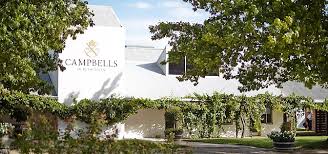 The key to making this ‘liquid gold’ is the Brown Muscat (Muscat a Petits Grains Rouge) grape. The fortified Muscat here is different from France’s lighter pale gold Vin Doux Naturels. With Australia’s old Muscat vines (some 100 years old), warm climate and unique winemaking methods, the result is a more intense richer liquid, with Rutherglen vying for the title of ‘Muscat capital of the world’.
The key to making this ‘liquid gold’ is the Brown Muscat (Muscat a Petits Grains Rouge) grape. The fortified Muscat here is different from France’s lighter pale gold Vin Doux Naturels. With Australia’s old Muscat vines (some 100 years old), warm climate and unique winemaking methods, the result is a more intense richer liquid, with Rutherglen vying for the title of ‘Muscat capital of the world’.
Rutherglen is flat, with red loam soils. Summer days can be fiercely hot, but at night cool air from nearby Victorian Alps crucially retains acidity in grapes. Muscat is picked at high sugar levels (16-18 degrees Baume) and the time of harvest is very important.
 “We wait until grapes have just started to dimple, rather than raisin”, says Jen Pfeiffer (pictured), winemaker at Pfeiffer Wines. “It is this ‘dimpling’ which is the magic of Rutherglen Muscat as dimpled berries have all the sugar and flavour”.
“We wait until grapes have just started to dimple, rather than raisin”, says Jen Pfeiffer (pictured), winemaker at Pfeiffer Wines. “It is this ‘dimpling’ which is the magic of Rutherglen Muscat as dimpled berries have all the sugar and flavour”.
“We have a short window of opportunity to extract flavours from dimpled Muscat grapes on its skins”, explains Pfeiffer. “We watch the fermentation like a hawk, we don’t want to ferment for too long, just 3-5 days, as we want to retain sweetness”.
And it’s that smell of Christmas pudding that gives them a clue that ferment has begun and they have a short time for extraction before fortification. By adding 96% Australian grape spirit fermentation is halted, leaving high levels of residual sweetness. “Softness in the spirit is really important – I once tried brandy instead – never again”, says Pfeiffer.
New wines are put into different sized oak casks to allow flavours of Muscat to integrate and mature, without overt new oak influence. Some use 60,000 litre casks, greatly treasured by older families, whilst Pfeiffer Wines who began in 1984 use smaller 60 litre barrels.
The place they keep their barrels influences the speed of the wine’s development. Historically matured under corrugated iron roofs encouraging faster maturation, others stack barrels in a modified solera system to create a consistent blend, similar to Jerez in Spain for sherry. Some of Rutherglen’s precious soleras contain wines up to four generations of the family and most fortified Muscats produced are solera blends, not vintage wines.
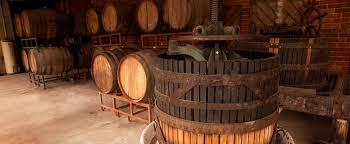 The real key to Australia’s liquid gold is in blending, a skill passed down from generation to generation, with Chambers, Stanton & Killeen and Campbells with 5th, 6th and 7th generation winemakers passing on their artistry and ‘house style’.
The real key to Australia’s liquid gold is in blending, a skill passed down from generation to generation, with Chambers, Stanton & Killeen and Campbells with 5th, 6th and 7th generation winemakers passing on their artistry and ‘house style’.
Evaporation is important as the wine concentrates with increased viscosity, with casks loosing 2-10%, making the production of this liquid gold a costly enterprise, hence the price of the top wines.
Only one third of the Rutherglen’s production is fortified, the rest table wines. Out of the 20 producers, only 14 make Liqueur Muscat and just Campbells, Pfeiffer, Morris, Chambers and Stanton & Killeen make the four-tiered classification system: Rutherglen (3-5 years), Classic (6-10 years), Grand (11-15 years) and Rare (15 years+).
Lighter ‘Rutherglen’ style smells floral, fresh and like orange marmaladey; ‘Classic’ has richer toffee and liquorice; ‘Grand’ with roast notes, chocolate and molasses and the decadent ‘Rare’ smells of Christmas spice, coffee bean and balsamic.
Rutherglen Muscat can be sipped on its own, but is versatile with food: spicy curry, mince pies, spicy apple pie, custard tarts, crème brulee, chocolate pannacotta, figs, nuts, Stilton or Lanark Blue cheese for a sweet-salty combo or poured over vanilla icecream.
According to Wendy Killeen of Stanton & Killeen, the best glass to appreciate this ‘liquid gold’ is a larger wine glass like Riedel’s white wine Ouverture, so don’t serve in an old-fashioned copita.
In the 1980’s Rutherglen’s historic gem was in danger of extinction, now it has swung back in fashion with a modern take: offering smaller bottles under screwcap and promoting its use in cocktails like a Muscat espresso martini.
CAMPBELLS RUTHERGLEN MUSCAT (17.5%) ***STAR VALUE***
£12.99 hf bt Waitrose
Uplifted fruity notes typical of Campbell’s house style; sundrenched raisins, caramel notes, marmalade, black toffee sweetness, clean dry finish (220g/l residual sugar).
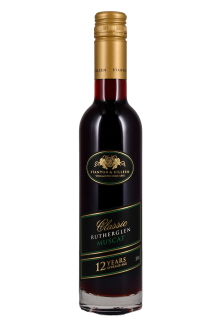 CHAMBERS OLD VINE CLASSIC RUTHERGLEN MUSCAT (18.5%)
CHAMBERS OLD VINE CLASSIC RUTHERGLEN MUSCAT (18.5%)
£21.99 hf Liberty Wines; www.winesearcher.com
Deep dark Classic in a drier style from later fermentation; aromatic orange peel, toffee and liquorice notes, glycerol richness, zingy intensity, long finish (269g/l).
STANTON & KILLEEN CLASSIC RUTHERGLEN MUSCAT (18.5%)
£17 hf The Wine Society
At average 12 years, this older Classic style has rose petal notes, treacley luscious decadent sweetness, deep long raisiny finish; well-priced ‘Classic’ (282g/l).
 PFEIFFER GRAND RUTHERGLEN MUSCAT (17.5%) ***STAR BUY***
PFEIFFER GRAND RUTHERGLEN MUSCAT (17.5%) ***STAR BUY***
£50 ht House of Townend; Mr Wheeler
Olive green hue indicates age, rich intense aromas with dark chocolate and toffee notes, palate has a vibrant freshness and nutty richness. Beautifully balanced Grand based on 1986 vintage; clear favourite (297g/l)
MORRIS OLD PREMIUM RARE RUTHERGLEN MUSCAT (17.3%)
£99 hf Fine & Rare Wines; Fine Wine Co Musselburgh
Morris are known for robustly strong sweeties; dense, treacly, hedonistic, unctuously sweet, as rich as you can get, like a liquid Christmas pudding – a dessert in itself (312g/l).
Join Rose’s forthcoming virtual tastings:
English Sparkling Wine in association with UK Winery of the Year Harrow & Hope : Friday 22 January 2021 www.rosemurraybrown.com
Burgundy & Bordeaux in association with Corney & Barrow : Fridays 5 & 12 February 2021 www.rosemurraybrown.com
wine tastings
The perfect gift for the wine enthusiast in the family. Rose does In-person tastings too.
cellar advice
Rose does cellar valuations for private clients, valuations for insurers & bespoke portfolio management.
Related stories
March 31, 2024
By Rose Murray Brown MW Published in The Scotsman 30 March 2024 On 2 February 1659, the first wine made from grapes grown in South Africa was crafted by the Governor of the Cape, Jan van Riebeeck. He had planted vines four years earlier in the Company’s Garden near Cape Town from cuttings imported from France. Van Riebeeck’s first
March 24, 2024
By Rose Murray Brown MW Published in The Scotsman 16 March 2024 Heatwaves and bushfires were very much on the agenda when I visited Chile last month as winemakers prepared for their 2024 harvest in blistering heat and drought, with a plume of smoke from the devastating fires lingering over coastal hills. Heat and drought are the greatest challenges
March 23, 2024
By Rose Murray Brown MW Published in The Scotsman 9 March 2024 I have two glasses of Malbec in my hands from the same high-altitude vineyard in Uco valley in Argentina. I am in the Catena Institute of Wine in Mendoza with winemaker Agustin Silva. He has asked me to taste the two wines, both from the 1500m high



